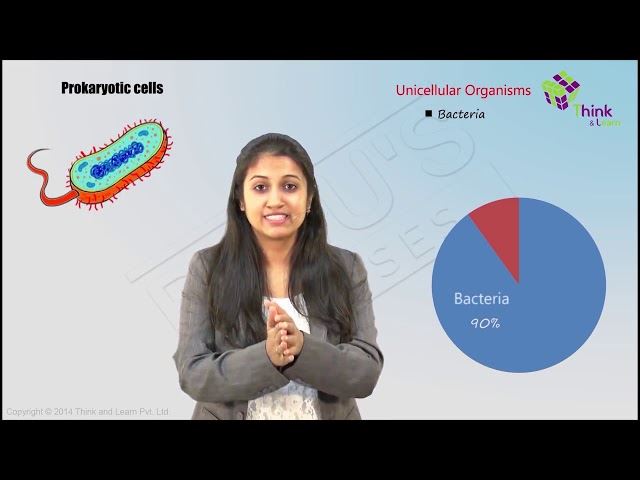Table of Contents:
Download Complete Chapter Notes of Biological Classification
Download Now
Nostoc is a genus of blue-green algae or cyanobacteria. They are prokaryotic and perform photosynthesis. They are found mainly in freshwater as free-living colonies or attached to rocks or at the bottom of lakes. They are also found on tree trunks. They are also found as an algal component of lichens in certain bryophytes (Anthoceros). They are capable of nitrogen-fixing and perform photosynthesis. They are also present as an endosymbiont to fungus.
Nostoc Classification
Nostoc are prokaryotic and are grouped with bacteria. The cell lacks membrane-bound organelles and genetic material is found dispersed in the cytoplasm. They are kept in cyanobacteria as they are photosynthetic.
| Domain | Bacteria |
| Phylum | Cyanobacteria |
| Class | Cyanophyceae |
| Order | Nostocales |
| Family | Nostocaceae |
| Genus | Nostoc |
Some of the commonly found Nostoc species are:
Nostoc commune is eaten as a salad
Nostoc azollae forms symbiotic association with water fern
Nostoc punctiforme form symbiotic relationship with Anthceros and other higher plants
Nostoc flagelliforme is known as Fat choy. It is used as a vegetable in China
Nostoc pruniforme forms very big colonies (diameter as large as ~25 cm)
| Also see: Economic Importance of Algae |

Explore: Answer Key NEET of 2022
Nostoc Structure
- Nostoc are filamentous and unbranched. Numerous filaments are found in a gelatinous mass as a colony. The colonies may be as big as an egg. The filament consists of a chain of cells, which appear like a bead. They are called trichomes
- Cells are oval, spherical or cylindrical
- Some of the cells in the filament are differentiated, they are called heterocyst. They are sites for nitrogen fixation. Nitrogenase enzyme fixes nitrogen
- Each filament is covered in a mucilaginous sheath, which is a protective layer. It absorbs and retains water. The gelatinous sheath is made up of polysaccharides and also contains proteins
- Colonies are of different shapes, sizes and colours. They are mostly greenish or bluish-green in colour and also have red-brown or yellow-green colour
- Extracellular pigments are also found, e.g. nostocine, scytonemin. These pigments along with some amino acids protect the cells from UV radiation
- Each cell has a thick cell wall made up of peptidoglycan
- The cytoplasm of a cell is differentiated into outer coloured due to peripherally arranged chromoplast and inner clear cytoplasm
- Cells have various pigments. Cells contain chlorophyll (green pigment). Phycocyanin (blue) and phycoerythrin (red) are also present
- Inner cytoplasm contains incipient nucleus or a nuclear body, DNA is without histones
| Further reading: |
Nostoc Reproduction
Nostoc reproduce vegetatively or asexually by spore formation.
The vegetative reproduction is by fragmentation. Small colonies can grow attached to a large colony and later form separated colonies.
Hormogonia are short and free filaments. They are formed when a filament breaks. It retains the gelatinous sheath. New trichomes are developed inside the colony.
Asexual reproduction is by the formation of resting spores known as akinetes. Some of the cells become thick-walled due to accumulation of food. They can withstand unfavourable conditions for many years. Under favourable conditions, they germinate to form a new filament.
Nostoc also reproduce by heterocysts. Heterocysts separate from the filament. They divide and germinate into a new filament.
Ecological Importance
- Nostoc are important for their nitrogen-fixing ability. They are used in paddy fields and are also used to increase the nutrient value of soil
- They are rich in proteins and vitamin C and are used as a delicacy in various Asian countries, e.g. N. flagelliforme, N. commune, etc.
- N. muscorum has shown to accumulate polyhydroxy butyrate, which is a precursor of plastic. It may have useful application in the industry
- Cyanobacteria can convert CO2 to biofuels. Nostoc have shown to produce hydrogen
- They can be used for bioremediation of wastewater and degrade environmental pollutants
- Various species, e.g. N. muscorum, N. commune, N. insulare, etc. extracts have shown antibacterial or antiviral activity and may be used in future to prepare drugs
Frequently Asked Questions
Where is nostoc found?
Nostoc is a genus of cyanobacteria (blue-green algae). They are found mainly in freshwater as free-living colonies or attached to rocks, tree trunks or at the bottom of lakes. They are also found in symbiotic association with plants such as water fern and Anthoceros.
Which kingdom does nostoc belong to?
Nostoc is a genus of cyanobacteria (blue-green algae). They belong to the kingdom Monera.
Does nostoc produce oxygen during photosynthesis?
Nostoc is a genus of prokaryotic microorganisms commonly known as blue-green algae. They are capable of nitrogen-fixation and also perform photosynthesis. They are capable of performing oxygenic photosynthesis. They have chlorophyll ‘a’, just like plants.
Is nostoc eukaryotic or prokaryotic?
Nostoc is a genus of prokaryotic microorganisms commonly known as blue-green algae. They belong to the kingdom Monera and the phylum Cyanobacteria, which contains photosynthetic bacteria.
How nostoc fix atmospheric nitrogen?
Nostoc has the ability to fix atmospheric nitrogen in a specialised cell called heterocyst. Some of the cells in the filament are differentiated, they are called heterocyst. They are sites for nitrogen fixation. The nitrogenase enzyme fixes nitrogen. They are used in paddy fields and are also used to increase the nutrient value of soil. They fix atmospheric nitrogen to ammonia, nitrites and nitrates.
Also Check:
NEET Flashcards: The Living World
NEET Flashcards: Biological Classification
NEET Flashcards: Cell The Unit Of Life
NEET Flashcards: Cell Cycle And Cell Division
NEET Flashcards: Reproduction In Organisms
Recommended Video:


I NEED TO PREPARE MORE.